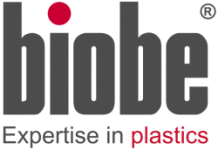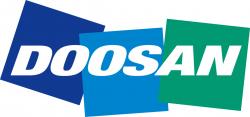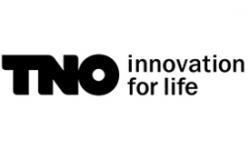Amine solvents used for post combustion CO₂ capture mainly degrade through three main mechanisms – oxidative, thermal and CO₂ induced degradation. Oxidative degradation of amines occurs in the presence of oxygen and normally at temperatures below 100°C. This mechanism leads to the formation of a variety of undesirable products including ammonia and acidic compounds that react further to form Heat Stable Salts (HSS). Thermal degradation occurs at temperatures higher than 100°C and results in the formation of heavier degradation products. In the third mechanism, primary and secondary amines react to form oxazolidones and diamines in the presence of CO₂. Solvent degradation leads to several adverse impacts on the overall capture process including loss of solvent capacity with leads to the need for solvent replenishment to maintain capture rates. The solvent quality also deteriorates in terms of change in physical properties such as viscosity and density. Corrosivity of the solvent also increases leading to accumulation of metals like iron, nickel and chromium in the solvent. Solvent degradation, therefore, leads to an overall negative impact on the economics and environmental impact of amine based post combustion CO₂ capture.
WP2 - Controlling Degradation
The main objective of WP2 is to develop strategies to control solvent degradation. A number of degradation countermeasures will be designed and tested at the LAUNCH rigs. These will involve modifying the design and operation of capture plants, as well as strategies for removing the components that lead to (or accelerate) degradation. The removal of degradation products themselves, to avoid accumulation, will be included in the degradation control strategy.
Task 2.1 Oxygen removal
Task 2.2 NO2 removal
Task 2.3 Determining the role of iron and technologies for in-situ iron removal
Coordinator profile

Coordinator Name: Juliana Monteiro
Coordinator Job Role: Scientific Researcher, TNO
Juliana Monteiro has a PhD in Chemical Engineering and holds a position as scientific researcher at TNO in the field of gas treating, in particular CCUS. Since 2009 she has been involved in CCS projects, more particularly in chemical absorption of CO2. Her activities include solvent development and characterisation, modelling and simulation of CO2 capture systems, designing of CO2 capture plants and economical assessment of processes. More recently, she has been involved in developing and evaluating CO2 utilisation technologies, through her involvement in the CEMCAP and CyclicCO2R projects.
Results
D2.2.1 - Design of thiosulphate dosing system for the RWE pilot
The oxidative degradation of amines can be connected to the presence and concentration of NO2 in the flue gas, as it results in reactive species. A strategy for NO2 removal based on thiosulfate dosing in the aqueous NaOH solution used in a standard SO2 pre-scrubber has been developed by The University of Texas at Austin up to pilot scale (TRL5) at National Carbon Capture Center (NCCC). In LAUNCH, a number of degradation control technologies will be demonstrated at pilot scale at RWE (WP5), including thiosulfate dosing. For that, the design of the thiosulphate dosing system for the RWE pilot must be established. This design is discussed in the present document.
D2.3.1 Removing meltals from degradad solvents
Bench-scale experiments were performed to test the effects of carbon treating on piperazine (PZ) with ongoing oxidation. The combined mitigation of carbon treating and N2 sparging was also tested. When carbon treating is applied, the UV-Vis absorbance at 320 nm, the NH3 rate, and the accumulation rate of dissolved Fe and total formate decrease. Carbon treating can remove Cr and Mn from the solvent and stop the solvent from foaming. The effects of carbon treating lasts when the carbon is bypassed, which is possibly due to the removal of catalytic degradation products. Therefore, it is better to apply carbon treating in the early stage of oxidation. Combining carbon treating and nitrogen sparging is more effective in oxidation mitigation than applying the methods separately. The amount of Fe removed by the carbon bed is greater than the result calculated from the solvent inventory and concentration difference of Fe in solvent, indicating that the Fe colloids or other “soluble” Fe can dissolve into the solvent when the Fe in solvent is adsorbed and removed. The carbon can remove the degradation products that can complex with Fe3+, even if they are not complexed. Since the source of Fe includes fly ash and corrosion, removing the ligands instead of all the available Fe is a more feasible target.
D2.3.2 - D5.2.2 - 5.2.3 The impact of iron and impurities removal on the degradation of CO₂ capture solvents
The impact of the removal of iron and impurities on the degradation of CESAR1 by applying solvent management technologies with different effect mechanisms (adsorptive removal, ion exchange) was investigated and checked against each other in a unique 41 months (1,240 days or 29,760 testing hours) long-time test at the CO2 capture plant at Niederaussem without solvent inventory exchange and almost continuous 24/7 operation. The results of the test campaign of solvent management technologies with CESAR1 are contrary to the general recommendations according to an inappropriate guideline from the UK Environment Agency (published in July 2021) on best available technologies and some tests with 30% MEA which have been short compared to the time-scale of solvent degradation. The BAT document must be revised.
More About the Project
Objectives
The primary objective of the LAUNCH project is to accelerate the implementation of CO2 capture across the energy and industry sectors by developing novel solvents and establishing a fast-track, cost-effective de-risking mechanism to predict and control degradation of capture solvents.
Outcomes
The LAUNCH project will deliver the necessary knowledge and tools to allow CO2 capture plants to operate in a more controlled and cost-efficient way. The project will also provide solvent developers with the tools to assist in designing and validating novel solvents. By avoiding uncontrolled build-up of degradation products, LAUNCH will improve the performance and economics of CO2 capture.












